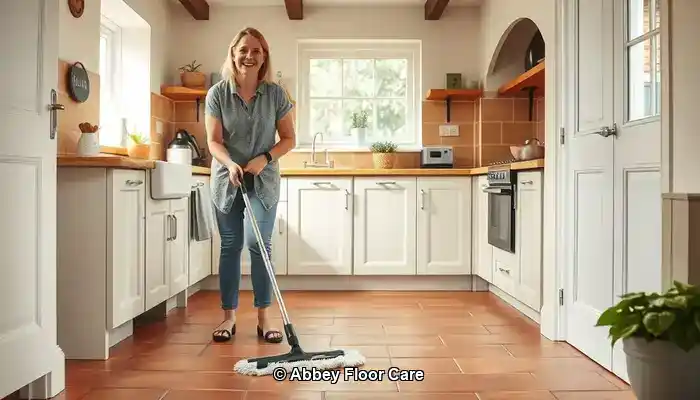
Last Updated on September 29, 2025 by David
Essential Techniques to Maintain Pristine Terracotta Flooring
-
- Understanding Terracotta’s Porous Nature is key, as it is highly susceptible to dirt accumulation, especially in damp climates like Surrey.
- Proper sealing is a must to prevent moisture and contaminants from penetrating the tile surface.
- Consistent upkeep is vital—engage in daily sweeping and weekly mopping using <a href="https://limitsofstrategy.com/ph-neutral-cleaners-essential-choices-for-stone-floors/">pH-neutral cleaners</a> to maintain the tiles’ visual appeal.
- Steer clear of harsh chemicals and steam mops, as they can harm the sealant and etch the surface of the tiles.
- Opt for eco-friendly cleaning solutions, particularly in homes with pets or children.
- Consider hiring professional restoration services for comprehensive cleaning and resealing, enhancing long-term protection.
- Utilize strategically placed rugs and mats in high-traffic zones to significantly reduce dirt transfer onto the tiles.
- Manage moisture effectively—ensuring proper ventilation and quickly addressing spills is crucial to prevent staining and mould growth.
Understanding Why Terracotta Tiles Accumulate Dirt Rapidly
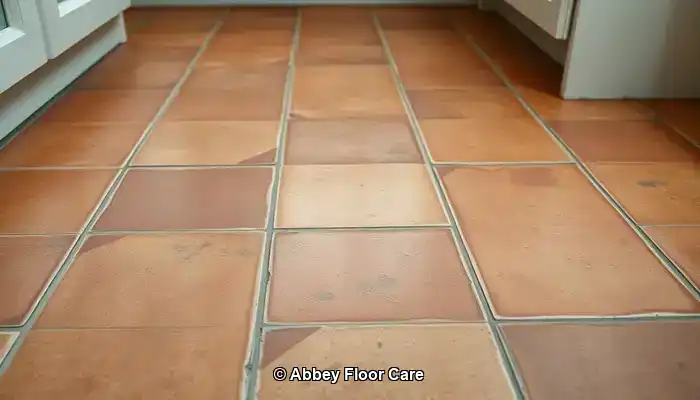
Terracotta tiles provide a visually appealing flooring option, perfect for traditional or rustic-style homes in Surrey. Their inherent warm hues and natural texture bring a distinct charm into any environment. However, despite their attractive qualities, terracotta is notorious for becoming dirty at a rapid pace. Gaining insight into the factors contributing to this accelerated soiling is essential for effective cleaning and maintenance practices.
Expert Recommendation: Top Products for Daily Terracotta Care
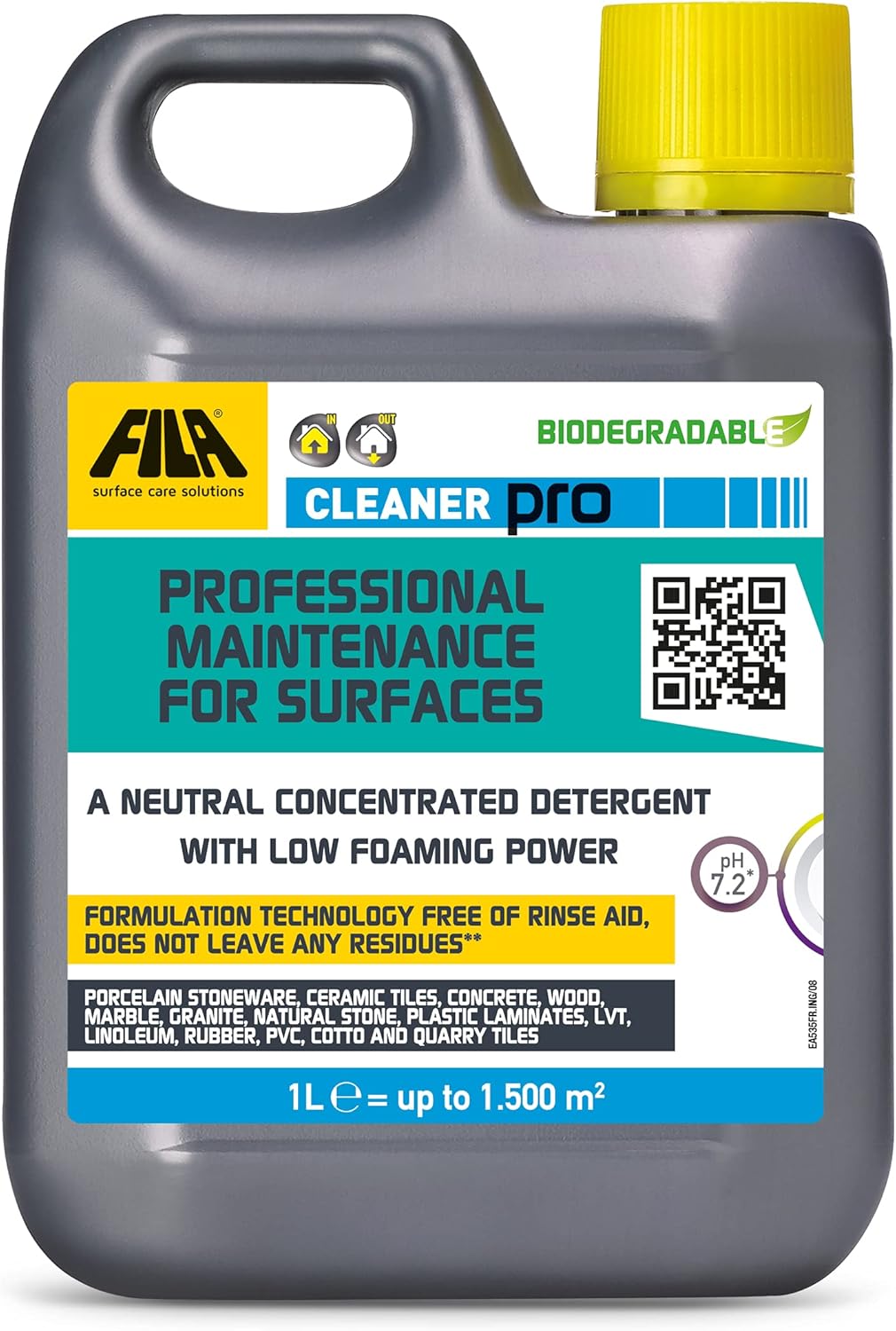
Fila Pro Floor Cleaner
|

LTP Floorshine
|
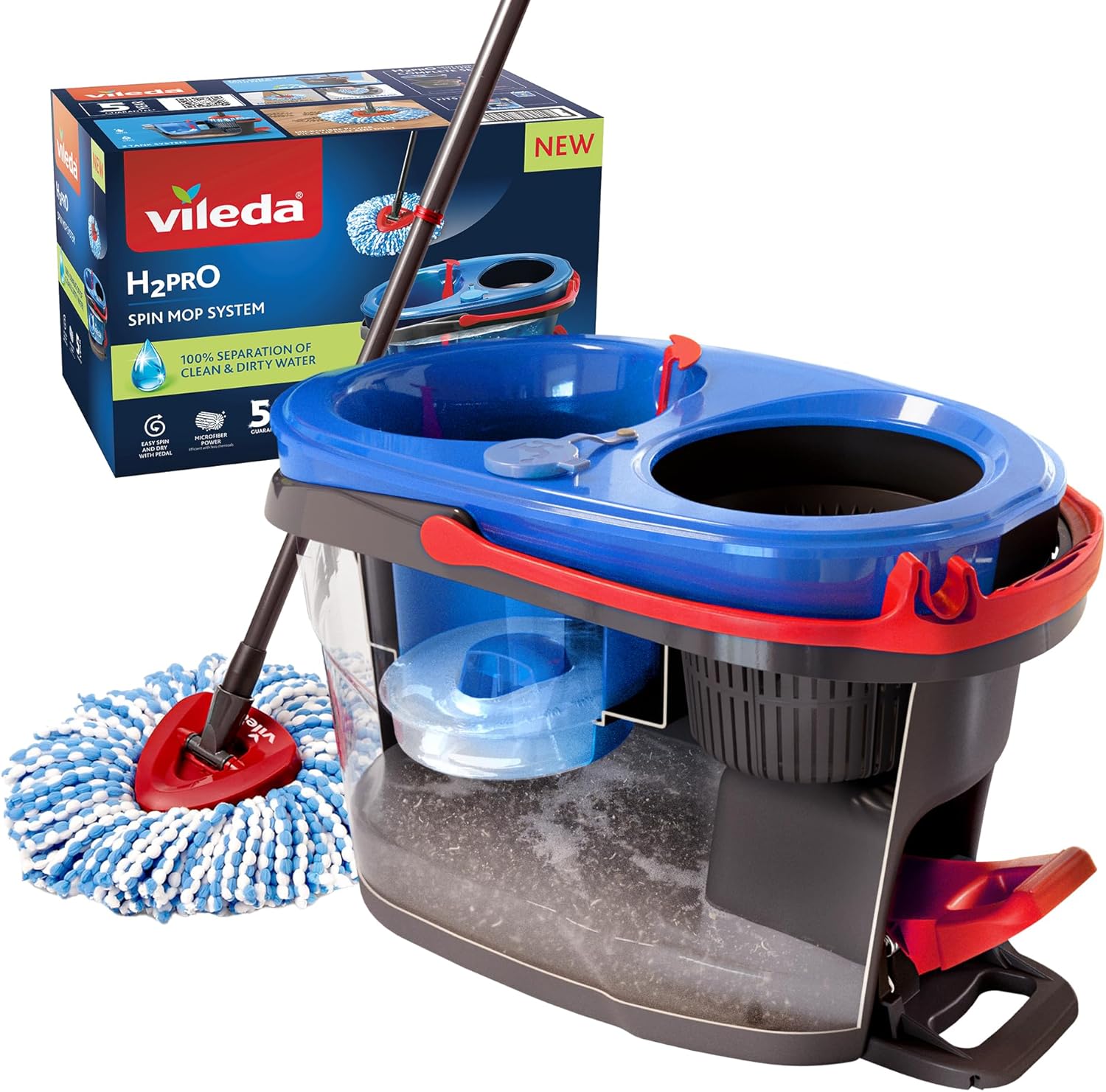
Vileda H2PrO Spin Mop System
|
Grasping Porosity: A Crucial Factor in Dirt Accumulation
Terracotta is crafted from natural clay and is fired at lower temperatures than many other tile varieties. This production process results in a highly porous surface that readily absorbs moisture, oils, and dirt, functioning much like a sponge. As a result of this porosity, grime can infiltrate deep within the tile, making it difficult to remove with typical cleaning techniques.
Unsealed terracotta is especially susceptible to staining. Without a protective layer, even minor spills or muddy footprints can leave indelible marks. Over time, this can create a dull, stained appearance that is often challenging to restore without professional intervention.
How Surrey’s Climate Affects Terracotta Cleanliness
The climate in Surrey significantly influences how quickly terracotta floors become dirty. The area’s consistent rainfall and humid conditions often lead to more moisture being tracked indoors, particularly in entryways and conservatories.
Homes located near wooded areas or gardens encounter an even greater risk. Soil, pollen, and organic debris are easily tracked onto terracotta surfaces, especially if shoes aren’t removed upon entry.
Identifying Daily Habits Contributing to Increased Dirt Accumulation
In addition to environmental conditions, daily behaviors can exacerbate the problem. Using inappropriate cleaning products—such as acidic solutions or bleach—can strip protective coatings and damage the tile’s surface. While steam mops are commonly used, they often push moisture deeper into the tile, worsening the issue.
High-traffic areas, such as kitchens and hallways, naturally endure more wear. Without consistent sweeping and mopping, dirt can accumulate swiftly, embedding itself within the tile’s texture.
Effective Preventative Strategies for Cleaner Terracotta Tiles
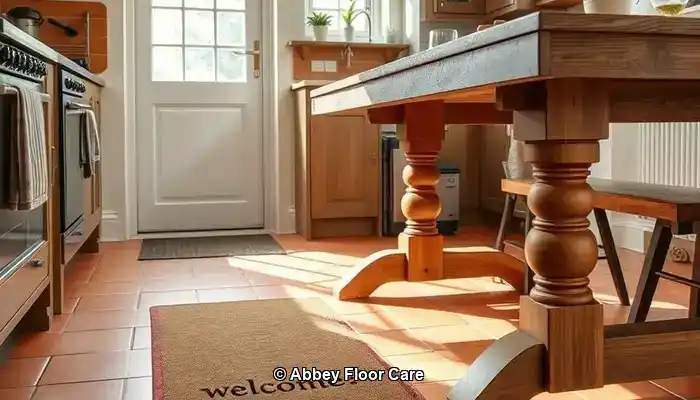
Maintaining the cleanliness of terracotta flooring requires proactive strategies designed to thwart dirt accumulation from the outset. In homes throughout Surrey, where damp weather and garden traffic are commonplace, engaging in preventative care is crucial to uphold the natural charm of terracotta tiles.
Sealing: Your First Line of Defense Against Dirt Accumulation
The most efficient method for preventing terracotta from becoming dirty quickly is ensuring it is adequately sealed. A high-quality, breathable sealant establishes a protective barrier that repels moisture, oils, and grime. In Surrey, where humidity levels can vary, sealing is essential in deterring water absorption that can result in staining and mould growth.
Experts recommend resealing terracotta every 12 to 18 months, depending on foot traffic and exposure. In busy areas such as kitchens, hallways, and conservatories—where daily use is typical—more frequent sealing may be warranted. Always select a sealant specifically formulated for porous stone, avoiding glossy finishes that may trap dirt on the surface.
Smart Design Choices: The Role of Rugs and Mats
Strategically positioning rugs and mats can significantly reduce the amount of dirt that comes into contact with your terracotta tiles. Implement heavy-duty doormats at entrances to catch mud and moisture before they can infiltrate your home. In high-traffic regions like hallways or beneath dining tables, area rugs act as a buffer, safeguarding the tile from wear and tear.
For rooms that connect to the outdoors, consider using washable runners that can be easily cleaned. These additions not only help protect the tile but also enhance the warmth and aesthetic of your living space.
Moisture Management in Surrey Homes
Given Surrey’s reputation for rainy and moist conditions, regulating moisture levels is vital to reduce dirt accumulation on terracotta. To address this matter, utilize dehumidifiers in enclosed areas and ensure proper ventilation throughout your home. Promptly clean up spills and avoid leaving wet items—like shoes or towels—on the flooring.
If your terracotta is installed in a conservatory or garden room, consider adding blinds or UV filters to minimize condensation and shield against sun damage. These minor adjustments can significantly affect the longevity and appearance of your tiles over time.
By combining effective sealing, thoughtful design choices, and moisture management, homeowners in Surrey can substantially decrease the speed at which terracotta floors accumulate dirt. In the following section, we will explore optimal cleaning practices to maintain that fresh, natural appearance day after day.
Optimal Techniques for Cleaning Terracotta Tiles
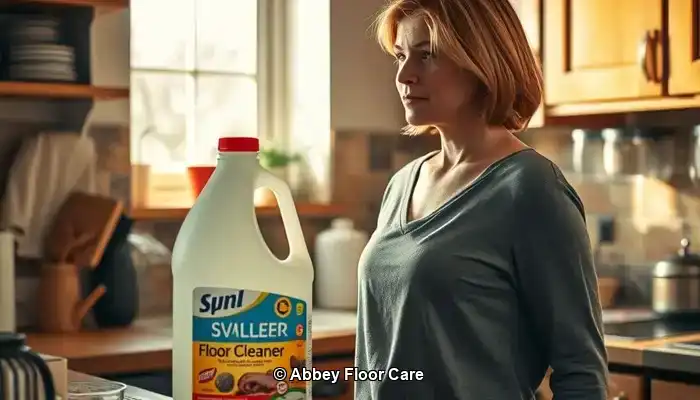
Even with appropriate sealing and preventative measures in place, terracotta floors require regular attention to sustain their natural beauty. The key lies in employing suitable techniques and products that effectively clean without damaging the porous surface of the tiles.
Establishing a Consistent Daily and Weekly Cleaning Routine
In homes across Surrey, where outdoor elements frequently enter, daily sweeping or vacuuming is a must. Utilize a soft-bristle broom or a vacuum equipped with a hard floor setting to eliminate dust, grit, and organic debris before it settles into the tile.
For weekly cleaning, mop the floors with warm water and a pH-neutral cleaner specifically designed for natural stone. It’s essential to avoid soaking the floor; damp mopping is the best practice. Excessive water can penetrate the tile and lead to staining or mould growth, particularly in older or poorly sealed installations.
Selecting Appropriate Cleaning Products for Terracotta
Choose products that are both gentle and effective. Look for labels indicating “stone-safe,” “non-acidic,” or “pH-neutral.” In Surrey, where eco-conscious living is increasingly valued, many homeowners prefer biodegradable cleaners that are safe for pets and children.
Avoid using multi-surface cleaners containing bleach, ammonia, or citrus extracts, as these can strip away sealants and etch the terracotta, making it more susceptible to future staining.
For stubborn stains, use a soft cloth and a diluted solution of stone cleaner. Never scrub with abrasive pads or wire brushes, as these can scratch the surface and complicate future cleaning efforts.
Harsh Chemicals and Methods to Avoid
While steam mops may appear convenient, they are unsuitable for terracotta. The intense heat and moisture can penetrate the tile and weaken the sealant, resulting in long-term damage. Similarly, acidic cleaners like vinegar or lemon juice—even when diluted—can erode the tile’s surface and lead to discoloration.
Stick to gentle cleaning methods and always test any new products on a small, inconspicuous area before applying them to the entire floor.
Weighing Professional Care Against DIY Terracotta Maintenance
When it comes to caring for terracotta floors, many homeowners in Surrey begin with DIY cleaning techniques. While routine sweeping and mopping can be effective, there comes a point when professional assistance becomes not only beneficial but necessary.
Recognizing When to Consult a Tile Specialist in Surrey
If your terracotta tiles exhibit signs of deep staining, uneven color, or surface wear, it may be time to seek professional help. Tile care specialists in Surrey utilize advanced equipment and stone-safe products that penetrate deeper than standard household cleaners. They can also evaluate whether your sealant has deteriorated and suggest a suitable resealing schedule tailored to the specific conditions of your home.
Restoration services typically include deep cleaning, stain removal, and reapplication of breathable sealants that protect without altering the natural appearance of the tile. For older homes or heritage properties, specialists can even match the original finish to ensure authenticity.
Assessing Cost vs. Longevity: Is Professional Care Worth It?
While DIY cleaning may seem more economical, it often leads to temporary fixes. Without proper sealing and deep cleaning, dirt will continue to accumulate, necessitating more frequent maintenance and risking permanent damage.
Conversely, professional care can significantly extend the life of your terracotta floors. A single restoration session can rejuvenate color, eliminate embedded grime, and protect the surface for months or even years. In high-traffic areas like kitchens and hallways, this investment proves advantageous in terms of reduced maintenance and improved visual appeal.
Homeowners in Surrey who prioritize long-term property care and curb appeal frequently find that expert services deliver peace of mind and superior results. Furthermore, many local providers offer eco-friendly options and tailored maintenance plans to accommodate individual lifestyles.
Exploring Eco-Friendly and Safe Cleaning Alternatives
The earthy charm of terracotta deserves care that aligns with natural principles. For homeowners in Surrey looking to keep their floors spotless without compromising health or sustainability, eco-friendly cleaning is the ideal solution. Fortunately, contemporary products and methods allow for the protection of your tiles—and your household—without resorting to harsh chemicals.
Opting for Non-Toxic Sealants and Cleaners
Conventional sealants often contain solvents that emit volatile organic compounds (VOCs), which can linger in the air and negatively affect indoor air quality. Today’s eco-friendly alternatives feature water-based formulations that are low in VOCs and safe for use around children and pets.
When choosing a cleaner, look for labels indicating “biodegradable,” “plant-based,” or “stone-safe.” These products are designed to effectively lift dirt without harming the porous structure of terracotta. Brands specializing in natural stone care frequently offer concentrated solutions that can be diluted for daily use, minimizing waste and packaging.
Pet- and Child-Safe Cleaning Solutions
In bustling Surrey households, safety is as crucial as cleanliness. It’s best to avoid bleach, ammonia, and acidic cleaners like vinegar, which can damage the tile and pose risks to pets and young children. Instead, opt for gentle formulas derived from coconut oil, citrus enzymes, or mineral-based ingredients.
For those who prefer DIY cleaning, a simple mix of warm water and a few drops of castile soap can be remarkably effective for light cleaning tasks. Always test any homemade solution on a small area first to ensure it won’t harm the sealant or finish.
Implementing Sustainable Cleaning Practices
Eco-friendly care extends beyond product selection—it also encompasses habits. Utilize reusable microfiber cloths and mops instead of disposable pads. Regularly sweep to reduce the need for frequent wet cleaning. When resealing, opt for products that come in recyclable packaging and have minimal environmental impact.
Many floor care professionals in Surrey now provide green cleaning packages, utilizing certified non-toxic products and sustainable methods. If you’re uncertain where to start, booking a consultation with a local expert can help establish a routine that is both effective and eco-conscious.
Maintaining Immaculate Terracotta Floors
Terracotta flooring adds warmth, character, and timeless elegance to homes in Surrey; however, its porous nature necessitates careful management to maintain cleanliness and vibrancy. By comprehending the factors contributing to rapid dirt accumulation, ensuring proper sealing, and adopting prudent cleaning habits, you can greatly reduce grime buildup and extend the lifespan of your tiles.
Whether you’re managing a bustling household or restoring a heritage property, consistency remains key. Daily sweeping, pH-neutral cleaning, and seasonal resealing are effective strategies for keeping your flooring looking its best. And when stains or wear become evident, do not hesitate to seek assistance from a local specialist for professional restoration.
Utilizing eco-friendly products and safe cleaning routines guarantees that your floors remain beautiful without compromising health or environmental integrity. With the right approach, terracotta can continue to be a stunning feature in your home for years to come.
Are you ready to intelligently protect your floors? Contact us today for expert terracotta maintenance tailored to the unique conditions of Surrey. Let’s keep your home looking its finest—naturally.
Common Inquiries About Terracotta Floor Maintenance
Terracotta floors are timeless, yet they require specific care. Below are answers to the most frequently asked questions from homeowners in Surrey seeking to uphold their tiles’ cleanliness, protection, and aesthetic appeal.
How Frequently Should I Reseal My Terracotta Tiles?
In most residences across Surrey, it is advisable to reseal terracotta every 12 to 18 months. However, this timeframe may vary based on foot traffic, moisture exposure, and whether the tiles are situated indoors or outdoors. Areas such as kitchens, hallways, and conservatories may necessitate more frequent resealing. If your tiles begin to absorb water or appear dull, it’s time to reseal.
Is it Safe to Use Vinegar or Bleach on Terracotta Tiles?
No—vinegar, bleach, and other acidic or harsh cleaners can damage terracotta. These substances break down sealants and etch the tile surface, leading to permanent discoloration. Always opt for pH-neutral, stone-safe cleaners specifically formulated for porous flooring.
What Type of Mop is Best for Cleaning Terracotta Floors?
A microfiber mop is ideal. It captures dust and dirt without scratching the surface and utilizes minimal water, which is essential for porous tiles like terracotta. Avoid sponge mops or steam mops, as these can oversaturate the tile and weaken the sealant.
Are DIY Cleaning Solutions Safe to Use on Terracotta?
Yes, but caution is crucial. A mild mixture of warm water and castile soap can be effective for light cleaning. Always test any homemade solution on a small, hidden area first. Avoid anything acidic or abrasive, and refrain from using homemade cleaners on unsealed tiles.
What Should I Do If My Tiles Are Already Stained?
If stains have penetrated the tiles, professional restoration is the most effective option. Tile care specialists in Surrey can perform deep cleaning, remove embedded grime, and reseal the surface to restore the tiles’ original color and texture. DIY methods may exacerbate the damage if inappropriate products are used.
The Article Tired of Dirty Terracotta? How to Keep It Clean Longer was first found on https://www.abbeyfloorcare.co.uk
The Article Keep Terracotta Clean Longer: Effective Maintenance Tips appeared first on https://fabritec.org
The Article Terracotta Maintenance Tips for Longer Lasting Cleanliness Was Found On https://limitsofstrategy.com





No responses yet